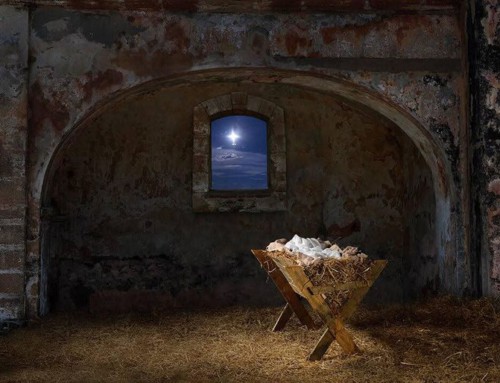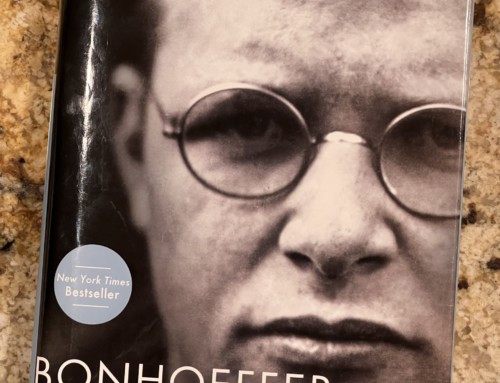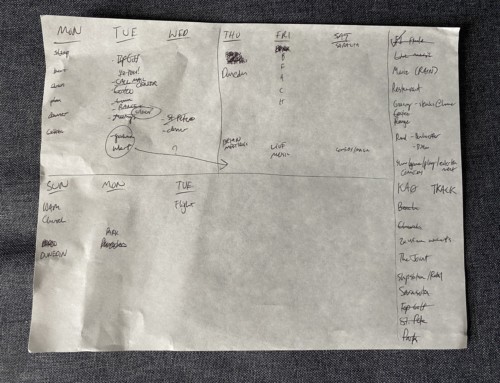One summer I got invited to a 4th of July brunch. Among the logistical details, the invitation read: “Breakfast & a patriotic thought by David.”
“I’ve been waiting all year for this invite,” said one friend.
“Independence Day is always best celebrated with our Canadian-American friends!” said another.
David is Canadian.
Despite holding citizenship north of the border, David loves America.
His patriotic thought was, primarily, a recitation of the Declaration of Independence.
As David pointed out, if you omit the list of grievances against King George III, the document is rather short. Short enough that two people reading out loud and alternating paragraphs is a welcome break during a summer brunch party and not so long to lose anyone’s attention.
I loved it.
I loved that David took us back to the genesis of the 4th of July.
I loved connecting our pancakes, lawn chairs and stamped red-white-and-blue napkins with the American Forefathers, despotism and bold action.
David’s example inspired this assembly of founding documents to read each year with friends and family — a project which quickly expanded to include further background, details of traditional festivities and additional ideas for celebrating.
- New Year’s Eve / New Year’s Day
- See below – 7th and 8th Days of Christmas.
- The Feast of Epiphany
- Epiphany means manifestation or appearance. Celebrates the visit of the Magi to the Christ Child, and thus Jesus Christ’s physical manifestation to the Gentiles.
- Also known as Three Kings’ Day, Theophany and the Feast of Lights
- Falls on January 6, marking the completion of the 12 Days of Christmas (see below). May be bumped to the first Sunday after Jan 1.
- While Day 8 is the day to complete the giving of gifts, additional gifts may be given this day as well. Gifts given this day should be tied directly to, or given in the same spirit of, the gifts of the 3 wise men to the baby Jesus.
- The Epiphany Feast completes the season of Christmas by inviting us to discern the identity of the Christ Child, as revealed in three events:
- to the wise men (Matt 2:1-19) through the Star of Bethlehem;
- during his baptism (Matt 3:13-17) when a dove descended from heaven and God, the father, spoke; and
- during the wedding at Cana when he turned water into wine (John 2:1-11).
- Traditions:
- Bake a Three Kings’ Cake – As the Magi (the three wise men) made a careful search for the Child King upon His birth, so we should acknowledge that an important component of our faith involves seeking and searching for the Lord in unlikely places. Prepare and eat a sweet Three Kings’ Cake with a toy baby hidden inside. In the symbolic search for the baby Jesus, the person who finds the baby Jesus in his or her piece of cake is awarded the honor of providing the next year’s cake and/or hosting the celebration.
- Mark a door lintel with the Magi’s blessing – To reciprocate the blessings of a host, guests prepare and read a brief spiritual thought that includes the biblical account of the Magi’s visit to Jesus (Matt 2:1-19) and then make a series of marks with chalk on a door frame. The markings include letters, numbers, and crosses in a pattern like this: 20 † C † M † B † 24. The numbers correspond to the calendar year (e.g. 20-24 for the year 2024); the crosses stand for Christ; the letters have a two-fold significance:
- C, M, and B are the initials for the traditional names of the Magi (Caspar, Melchior, and Balthasar)
- they also abbreviate the Latin blessing Christus mansionem benedicat, which means “May Christ bless this house”
- Elaborate worship with lighted candles – We can also learn from the Magi how to be attentive to the light. Consider a candlelight procession starting with a series of small candles and advancing to larger ones. Finish with a central candle sufficient to light the scriptures for a vocal reading. This may be the Christ Candle from the Advent Wreath. You may also eat by candlelight or observe the stars in the heavens. In this way, pursuing light serves as a visual representation of our need to seek divine assistance and find God’s presence in our lives. The act of lighting candles focuses our attention and helps narrate the drama of God’s self-revelation in Jesus.
- Martin Luther King, Jr. Day
- Third Monday of January
- I Have A Dream (PDF, video)
- The Drum Major Instinct (pp1-3 abridged, pp4-9 full; video)
- Candlemas Day
- Feb 2 – 40 days after Christmas.
- Commemorates Joseph and Mary presenting Jesus at the Temple (Luke 2:22-40)
- Note the faith of Simeon and Anna, who each looked forward their whole lives and, in their twilight years, were finally blessed to witness Christ
- Also known as Feast of the Presentation of Jesus Christ, the Feast of the Purification of the Blessed Virgin Mary or the Feast of the Holy Encounter
- This day also celebrates the Coming of Spring Light, paganized as Groundhog Day
- An appropriate day to take down the Christmas Tree
- Valentine’s Day
- Feb 14
- President’s Day
- Third Monday of February
- George Washington’s Farewell Address (excerpt)
- St. Patrick’s Day
- March 17
- Honors St Patrick, a 5th century Christian missionary who “drove the snakes out of Ireland” while he served as a bishop there (source). The snakes represent pagan traditions and the druids of whom he was the first to successfully convert to Christianity (source).
- Four- and three-leaf clovers. Today it is common to use the four-leaf clover year round as a symbol of good luck. The clover and green are prominent symbols of St Patrick’s Day. However, the 4-leaf and “luck” are pagan adulterations that rewind St Patrick’s success in converting the Irish to Christianity. Patrick used the three-leaf clover to teach people about The Father, The Son and The Holy Ghost — operating in unity for the benefit of mankind (source).
- Wearing green. “In the late 1700s, the Society of United Irishmen, an underground nationalist group that sought to emulate the American Revolution and overthrow English rule, used the color green as a symbol of their cause. To avoid being spotted by the English, a nationalist revolutionary might wear a subtle hint of green, such as a green feather in his cap […] As Irish immigrants arrived in the United States and other countries in the 1800s, they took the custom of wearing green with them,” evolving into a method of loudly proclaiming their presence in the community (source). Today, we might swap out four-leaf clovers for three and wear green as a symbol of our willingness to witness our faith in God.
- Passover
- Palm Sunday
- Easter
- Listen: Israel in Egypt, Handel (Spotify, Amazon)
- Memorial Day
- Last Monday of May
- Honors those who died while serving in the United States Armed Forces. Originally called ‘Decoration Day’ as families would decorate the graves of fallen family members.
- Congressmen James A Garfield’s address at Arlington National Cemetery on the First Official National Decoration Day (May 30, 1868; renamed Memorial Day by Congress, 1971)
- Flag Day
- Annually on June 14
- Woodrow Wilson: Address on Flag Day – June 14, 1917
- Juneteenth
- Annually on June 19
- Emancipation Proclamation
- Gettysburg Address
- July 4th
- Pioneer Day
- Annually on July 24
- “Days of ’47” commemorates the arrival of Mormon Pioneers in the Salt Lake Valley in 1847.
- Read: A Priceless Heritage – James E Faust, Apr 1992
- Read: Address Given by President Marion G. Romney at Welfare Services Meeting Saturday, October 5, 1974
- Further reading: Dennis A. Wright and Rebekah E. Westrup, “Ensign Peak: A Historical Review,” in Salt Lake City: The Place Which God Prepared, ed. Scott C. Esplin and Kenneth L. Alford (Provo, UT: Religious Studies Center, Brigham Young University; Salt Lake City: Deseret Book, Salt Lake City, 2011), 27–46.
- Labor Day
- First Monday of September
- Recognizes the contributions workers have made to America’s strength, prosperity and well-being.
- Bill S-730, enacting Labor Day as a holiday – Aug. 28, 1893
- President Ronald Reagan Labor Day Message – 1988
- Constitution Day
- Annually on Sept 17
- Commemorates the formation and signing of the U.S. Constitution. The delegates to the Constitutional Convention met for the last time on September 17, 1787. Thirty-seven of them signed the document.
- The holiday recognizes all who are born in the U.S. or by naturalization have become citizens.
- Read: The Constitution: Articles I-VII – the original
- Read: The Constitution: Amendments 1-10 – The Bill of Rights
- Read: The Constitution: Amendments 11-27
- Read: mini bios of the Founding Fathers
- Rosh Hashanah
- Yom Kippur
- Columbus/Indigenous People’s Day
- Halloween + Dia de los Muertos
- Veterans Day (Armistice Day)
- Annually on Nov 11
- Honors all who have served in the United States Armed Forces.
- Originally, Armistice Day honored those who brought about the end of the “Great War” (WWI), wherein fighting on the Western Front ended Nov. 11, 1918. Recognized officially by President Woodrow Wilson in 1919.
- In 1954, President Dwight D. Eisenhower honored service personnel returning from WWII and the Korean War by rededicating Nov. 11 as Veterans Day, encouraging Americans to commit themselves to the cause of peace and to honor America’s veterans for their courage, honor, patriotism and sacrifice.
- Thanksgiving
- Annually on fourth Thursday of November
- President Abraham Lincoln’s Thanksgiving Proclamation – October 3, 1863
- The Mayflower Compact
- Advent
- Many thanks to Evangeline Taylor for her research on Advent and Christmas Feasts that kicked this off
- Begins 4 weeks before Christmas or on the last Sunday of November.
- The Christmas tree is historically put up the week before Advent.
- It is a time of expectant waiting and preparation for both the celebration of the birth of Christ and His return at the Second Coming.
- Activities throughout: Advent calendars or wreaths, hanging garlands/greenery, fasting, adding decorations to the tree, daily devotionals and prayers, gift giving, visiting with friends and family
- Readings + Listenings suggested to prep for Christmas:
- On Giving Gifts – blog post
- The Gift of the Magi, O’Henry – short story, 6 pages
- The Meanings of Christmas: Reflections on the Advent of Light, Manly P Hall – 12 essays, 225p (signature edition)
- Listen: Merry Christmas from Sesame Street, 1975 (Spotify, Amazon)
- Sunday Readings + Candles:
- Candles may be placed in a wreath of evergreens, symbolizing eternal life: evergreens for the continuity of life thru the seasons, and the circle for God’s course being one eternal round.
- M-Sa: readings on preparing for the Second Coming and the Final Judgment.
- Sundays:
- Week Preceding Advent – Feast of Christ the King. Set the context that the entire season focuses on Christ as our Prophet, Priest and King.
- First – looking forward to the coming of Christ: Isaiah, Old Testament Patriarchs, Book of Mormon prophecies and other texts foreshadowing His coming. Light the Prophecy Candle.
- Second – preparation for His arrival – e.g. the preaching of John the Baptist. Light the Bethlehem Candle.
- Third – the joy associated with the coming of our Savior. Light the Angel Candle.
- Fourth – the events involving Mary and Joseph that led directly to the birth of Jesus. Light the Shepherd Candle.
- Fifth (week after Christmas) – Light the Christ Candle (may also be lit on Christmas Eve).
- Christmas Day
- Annually on December 25
- Merges pagan traditions of celebrating the birth of light (Winter Solstice, shortest day of the year) with the Birth of Light — the Savior of the World, Jesus Christ
- Begins eight days of gift giving (Days 1-8, see below)
- Read: Luke 2
- The 12 Days of Christmas (source)
- Dec 25 – Day 1 – Christmas Day – (see above)
- 26 – Day 2 – Feast of St Stephen – commemorates the apostle Stephen’s care of the poor. Leaving the comfort of your home to deliver food to the needy reminds us, ultimately, of Jesus’s compassion for the needy. In the famous Christmas carol, Good King Wenceslas shows compassion to a peasant on the feast of Stephen.
- 27 – Day 3 – Feast of St John – celebrates Christ’s love for the apostle John, but also His deep love for all mankind. On this day, traditional toasts are made with Saint John’s love, a mulled wine from which the alcohol is boiled away.
- 28 – Day 4 – Feast of the Holy Innocents (Childermas) – a somber day to reflect upon the first-born of Israel who were slain by Herod’s forces in an effort to kill Jesus. Read: Matt 2:13-23. Reflecting on this loss reminds us of Jesus’s later sacrifice of His own life to save us from our sins, His Resurrection and triumph over death, and the necessity for us to give “up” to God our first and very best.
- 29 – Day 5 – Feast of St Thomas Becket – commemorates the death of the bishop of Canterbury who was martyred on this day in 1170. His fight to prevent the monarchy from usurping power over the church reminds us of the battle Jesus won to deliver his church from the tyranny of sin. This, then, is a day to celebrate freedom and the courage to stand up to tyranny.
- 30 – Day 6 – Feast of St Egwin of Worcester – remembers the founder of Evesham Abbey, a sixth-century bishop who was a protector of widows and orphans. Egwin was jealous about morality and the sanctity of marriage. His feast day gives us the opportunity to reflect on the righteousness and purity of God. Reading and reflecting on the Ten Commandments (Ex 20:1–17) and Beatitudes (Matt 5:3-10) would make this day meaningful.
- 31 – Day 7
- Feast of St Sylvester/Silvester – honors the burial day of a fourth-century pope. Sylvester is said to have slain a dragon—this seems entirely appropriate for someone charged with the responsibility of ushering in a whole year. The practice of setting off fireworks on New Year’s Eve probably originated as an activity on the feast of Saint Sylvester, symbolizing the conquering of the dragon’s fire.
- New Year’s Eve – an evening to express gratitude, giving thanks to all those who contributed to a good year. Sing Auld Lang Syne (Spotify) and toast friends and family. The title means for the sake of old times (source).
- Jan 1 – Day 8
- Note: 7 represents a full cycle (the 7 days of creation), and 8 represents wholeness as it is 7 plus 1, indicating completion of the cycle and arriving back at the beginning. So 8 is completion plus new beginnings.
- Final day of giving gifts. The idea of 8 days of gift giving is to celebrate, for 8 solid days, the Gift of Christ and to express gratitude for His Grace. Just as Christ’s role in our lives is multidimensional, so too are we blessed by many types of relationships, or in many unique ways by an individual relationship. Each day, we can focus gifts on honoring various social and family roles, or on honoring the various facets of relationships with those closest to us. With eight days of gift giving complete, the remaining 4 days focus on their celebratory feasts.
- Feast of the Circumcision of Christ – commemorates this event in Jesus’ life. Circumcising an infant on the eighth day after birth is an act of obedience symbolizing intentional separation, being set apart for God. Read: Luke 2:21.
- New Year’s Day – The 8th Day of Christmas symbolizes completion of the new year and new beginnings. This day is a day to honoring Mother Mary and all mothers — those who bring new life.
- Jan 2 – Day 9 – Feast of St Basil the Great – celebrate by baking a gold coin or coins or other prizes into a loaf of bread in honor of St Basil’s philanthropy. He originated this practice to distribute money to the poor of his church.
- Jan 3 – Day 10 – Feast of the Holy Name of Jesus – memorializes the day Jesus formally received his name in the Jewish temple. Of course, His name was foretold in earlier revelations. Jesus means “God Saves.”
- Jan 4 – Day 11 – Feast of St Simeon the Stylite (source) – St Simeon’s faith was influenced by hearing the Beatitudes when he was a young boy in the early 4th century. Upon coming of age he sought out the monastic life and devoted himself to extreme self-denial and prayer. He was so disciplined and extreme in his sacrifice that he was found unfit for community life and went to live as a hermit. When he went the whole of Lent without food or drink, it was considered to be miraculous. In preparation for the lavish celebration of Twelfth Night, and in connection with St Simeon’s asceticism, consider the 11th Day Feast an opportunity to eat sparingly.
- Jan 5 – Day 12 – Twelfth Night or Epiphany Eve – a lighthearted occasion. In traditional English festivities, serve a cake with a bean baked in. Whomever finds the bean is ordered to declare that the normal order of things be “turned upside down” until midnight. The Christmas tree can come down on Twelfth Night and its branches burned in a bonfire (or save the tree until Candlemas Day, Feb 2). May exchange additional gifts.
- Jan 6 – Day 13 – Epiphany – (see above)






Leave a Reply